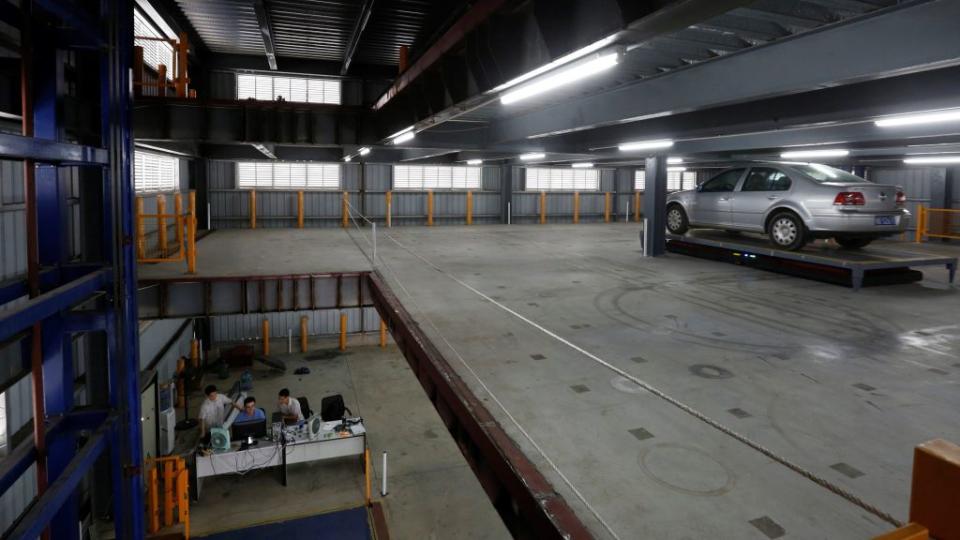All car companies are probably cheating on their emissions standards by now, or they should be

Yesterday (Jan. 12), the federal government announced allegations that Fiat Chrysler has been cheating on emissions tests. According to the allegations, the computers in 104,000 Jeep Grand Cherokees and Dodge Ram trucks from 2014, 2015, and 2016 with 3.0-liter diesel engines were allegedly equipped with lines of code intended to fabricate lower emissions. Earlier this week, a Volkswagen executive was arrested on charges of defrauding the US government; the company admitted to equipping over 600,000 of its diesel cars with similarly deceptive code.
As if to hint at more revelations to come, the US Environmental Protection Agency noted at the bottom of its Chrysler press release that in the course of re-testing American cars after the Volkswagen revelation, they’ve found “at least eight undisclosed pieces of software that can alter how a vehicle emits air pollution.”
Are we beginning to see a pattern? Probably.
That’s because once one company starts to cheat on emissions tests, it makes competitive sense for other companies to follow suit. “Good emissions numbers translate to sales these days,” says Paul Biedrzycki, a coder and co-founder of Cars and Code, a Brooklyn-based developer workgroup that focuses on automotive technology. Consumers want it, and governments demand it. “If one does it, they all have to at least seriously consider it.”
And it isn’t even that hard to cheat, thanks to a massive loophole in the way cars are tested.
All cars are equipped with a “drive cycle” setting, specifically in place for testing emissions. The drive cycle is a bit like a choreographed dance: It takes the car through a series of simulated driving conditions quickly, in an approximation of what might happen on the road. Another way to look at it, says Biedrzycki, is like punching in an old-school Nintendo cheat code. “If you pressed a sequence, it would put it into a certain mode. For lack of a better analogy, that’s what drive cycle does.”
Since, car companies obviously know what emissions numbers their drive cycle needs to hit, Biedrzycki says, fabricating the right results is relatively simple. “It’s kind of like studying for the test,” he says, but “knowing the exact questions on the exam before they walk into the classroom.”
The car coders can program the car to detect when it’s in the drive cycle setting, and then “they create a state—like a mode—for this car to be in hyper-efficient emissions mode.”
“With VW, they did it by setting a variable. Like, ‘if X is lower than this number, then go to this mode.’ A lot of these little things are hard to detect.” Once the car is out of the drive cycle setting, and driving on the road, it goes back to its real emissions levels. “There’s no way you would get the performance you got with the emissions that were tested,” says Biedrzycki.
In an era where car computers contain upwards of 7 million lines of code, there’s plenty of room for manipulation to go undetected, especially since the testing process leaves the drive cycle loophole wide open to exploit. “The car is such a black box,” Biedrzycki says.
But regulators are getting smarter, retesting cars and demonstrating a willingness to leverage major punitive damages; Volkswagen is set to pay a record $4.3 billion to settle its fraud case. The only long-term solution to fix the industry, as Biedrzycki sees it, is to design an emissions test that reflects “real-world, long-term results.”
But at this point, it should surprise no one if more companies are found to be selling cars built to defraud emissions tests, because—at least up until now—they wouldn’t get found out, and it gives them a business advantage. “It’s cheaper and faster to write some code to exploit the weaknesses of the testing process than it is to develop a car actually capable of these emissions numbers,” Biedrzycki says.
“The real question is how much will be public. I think it’s industry practice.”

Sign up for the Quartz Daily Brief, our free daily newsletter with the world’s most important and interesting news.
More stories from Quartz:

 Yahoo Finance
Yahoo Finance 